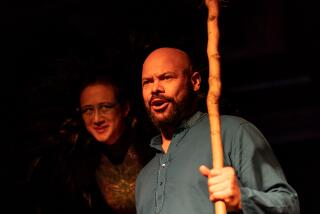The Earth in Balance, From Lava to Java
- Share via
It is the year of the volcano, both on the movie screen and in the headlines, and we’ve seen for ourselves that the recent real-life eruptions in Mexico and Montserrat are no less spectacular or devastating than the computer-generated ones that were concocted for “Dante’s Peak” or “Volcano.”
Now comes a kind of handbook for volcano-watchers, “Volcanoes: Crucibles of Change,” a short course in volcanology offered by a team of scientists who bring both scholarship and something like glee to their work. Richard V. Fisher, professor emeritus of geology at U.C. Santa Barbara, Grant Heiken and Jeffrey B. Hulen are credentialed volcanologists who also seem to understand why the ancients imagined that volcanoes were the abodes of the gods.
As we are repeatedly reminded in this book, a volcano is capable of inspiring both terror and fascination. The eruption of Mt. Pelee in 1902 killed some 29,000 precisely because crowds of sightseers flocked to the island of Martinique to watch the natural fireworks show, the authors point out. The main evacuation route from Mt. St. Helens in Washington state was gridlocked for the same reason when the mountain exploded in 1980.
The authors seem to appreciate the apocalyptic splendor of a volcano in full eruption, and they only heighten our appreciation for its deadly power when they explain how and why the so-called pyroclastic flow of a volcanic eruption--a “volcanic hurricane” of searing gases, molten lava and hurtling debris--is so destructive: “The skin of many of the dead was mummified with dark discoloration,” they write of the victims of Mt. St. Helens, “and exposed muscles were cooked rather than desiccated.”
But, to their credit, the authors do not dwell on the atrocity stories. Instead, they insist on demystifying the phenomena that they describe in vivid detail, explaining exactly how volcanoes are formed and what happens when they erupt. We learn that volcanoes and their eruptions come in all kinds and sizes--composite volcanoes and shield volcanoes, domes and maars and calderas. Abundantly illustrated, always accessible and sometimes downright chatty, “Volcanoes” is a work of science that has not lost its sense of wonder.
California is “volcano country,” as the authors point out, and potentially active volcanoes can be found in Alaska, Hawaii, the Cascade Mountains, the Rocky Mountains and even near Flagstaff, Ariz., too. They concede that such hot spots ought to be monitored for the sake of public safety, and the practical hazards of volcanoes are noted throughout the book. “Never Sail Through an Eruption Cloud” is the title of one cautionary chapter in which we are given a heart-stopping account of what happened to a British Airways 747 that encountered a cloud of volcanic ash over Java. One by one, the jet engines began to fail: “Golly-gosh, we’ve lost the lot,” the unflappable flight engineer announced to the pilot, who was forced to make an emergency landing.
But the authors themselves are undaunted by these dangers, and they encourage us to go and see volcanoes for ourselves. Indeed, the book includes a useful appendix titled “The Volcano Traveler,” a Baedeker of accessible sites for volcanological tourism around the world, including several destinations in California.
The book is, above all, a celebration of volcanoes, and encourages us to regard them as an essential element of the mechanisms that create and sustain life on Earth. The air we breath, the ground upon which we tread and the food we eat are linked to the sometimes hellish workings of volcanoes--volcanic gases created and continue to replenish the atmosphere, eruptions of lava have always added to the land mass and volcanic ash and dust deposit rich nutrients in the soil.
Even the cup of coffee that I sipped as I read “Volcanoes” owes something to the volcano: “The best coffees,” the authors write in a characteristically cheerful aside, “are grown in volcanic soils.”






